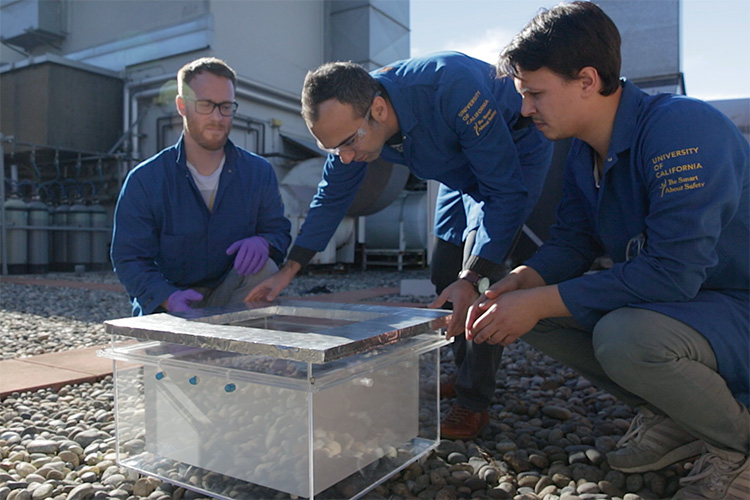Last October, a University of California, Berkeley, team headed down to the Arizona desert, plopped their newest prototype water harvester into the backyard of a tract home and started sucking water out of the air without any power other than sunlight.
The successful field test of their larger, next-generation harvester proved what the team had predicted earlier in 2017: that the water harvester can extract drinkable water every day/night cycle at very low humidity and at low cost, making it ideal for people living in arid, water-starved areas of the world.
It operates at ambient temperature with ambient sunlight, and with no additional energy input you can collect water in the desert. This laboratory-to-desert journey allowed us to really turn water harvesting from an interesting phenomenon into a science.
he trial in Scottsdale, where the relative humidity drops from a high of 40 percent at night to as low as 8 percent during the day, demonstrated that the harvester should be easy to scale up by simply adding more of the water absorber, a highly porous material called a metal-organic framework, or MOF. The researchers anticipate that with the current MOF (MOF-801), made from the expensive metal zirconium, they will ultimately be able to harvest about 200 milliliters (about 7 ounces) of water per kilogram (2.2 pounds) of MOF, or 3 ounces of water per pound.
Researchers he has created a new MOF based on aluminum, called MOF-303, that is at least 150 times cheaper and captures twice as much water in lab tests. This will enable a new generation of harvesters producing more than 400 ml (3 cups) of water per day from a kilogram of MOF, the equivalent of half a 12-ounce soda can per pound per day.
There has been tremendous interest in commercializing this, and there are several startups already engaged in developing a commercial water-harvesting device.
The harvester is essentially a box within a box. The inner box holds a 2-square-foot bed of MOF grains open to the air to absorb moisture. This is encased in a two-foot plastic cube with transparent top and sides. The top was left open at night to let air flow in and contact the MOF, but was replaced during the day so the box could heat up like a greenhouse to drive water back out of the MOF. The released water condensed on the inside of the outer box and fell to the bottom, where the researchers collected it with a pipette.
The extensive field tests lay out a blueprint allowing engineers to configure the harvester for the differing conditions in Arizona, the Mediterranean or anywhere else, given a specific MOF.
